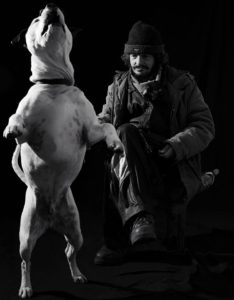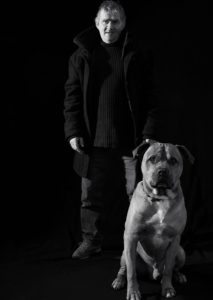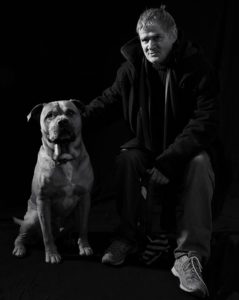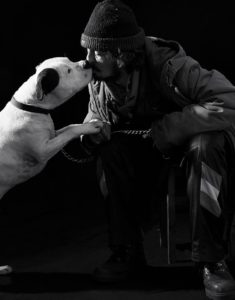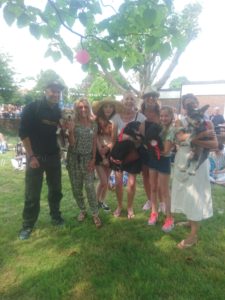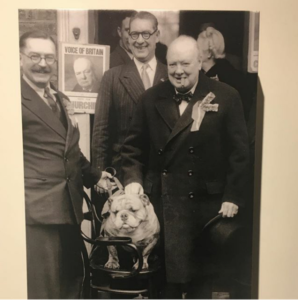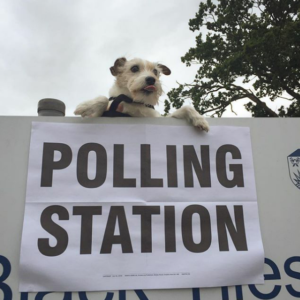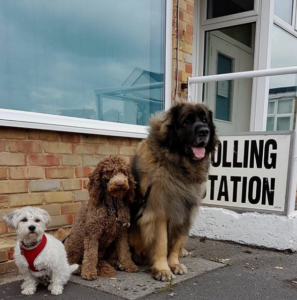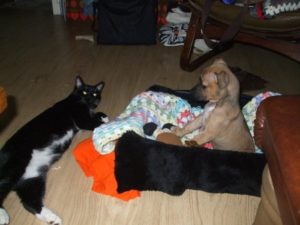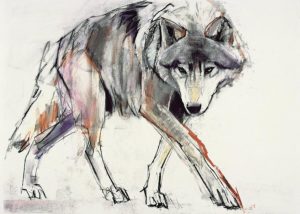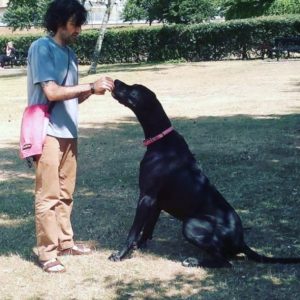Stress, anxiety and fear
When you learn their language you may realise that dogs never stop talking…

Signs that may indicate stress, anxiety or fear in dogs include a tucked tail, ears flat and back, licking the lips or nose, whale eye, looking away, raised paw, trembling, a low body posture, yawning, panting, grooming, sniffing, seeking out human comfort, hiding and a stiff or frozen posture. Some of these are also examples of displacement behaviour.
It is important not to focus on just one aspect of the body but rather one should observe the whole of the body whilst also considering the context and environment. An example could be a dog that lunges whilst on the lead. Is it because it is frustrated by the lead and may possibly otherwise be friendly off lead? Or perhaps it’s a genuine fear and the dog is exhibiting the behaviour in question to see off the other dog?

Clients are often unaware that their dog may be exhibiting signs of stress or fear. One study showed that about 30% of dogs in the veterinary waiting room displayed signs of stress which were not noticed by the owners and included panting, yawning and grooming.

Tails
A wagging tail does not always mean the dog is friendly as many people believe. If the dog is highly aroused, either positively or negatively, the tail often tends to be raised high. Tails tend to wag when a dog is emotionally aroused. Dogs may also use their tails as communicative signals which can include threatening displays or appeasement, play, nervousness, confusion, anxiety and fear.

Tense or loose body
A tense body can indicate uncertainty, apprehension or a feeling of being uncomfortable in the environment. When a dog freezes this could be a warning that the dog is preparing for a flight or fight response. If the warning is ignored, aggressive behaviour may happen. Conversely, a loose, soft and flexible body will indicate that the dog is relaxed and comfortable the environment.


Avoidance
Avoidance behaviour is characterised by a dog looking away or walking away and is an attempt to avoid conflict or confrontation. Cut off signals are generally used between two or more dogs and typically during play sessions or greetings. These are noticeable when a dog stops what it is doing and does something different such as yawning, lip licking, sniffing the ground or scratching. Dogs that have been well socialised will respond better to these signals than poorly socialised dogs. Those dogs less versed in this language may become confused and this may lead to aggression. Fearful avoidance is shown by a low head and tail with the body close to the floor as if trying to appear smaller.

Ears
Similar to the tail, what a dog does with its ears will give indications about the internal emotional state. Ears that are back and flat against the head may indicate a submissive feeling, especially in younger dogs. Ears that are back but not quite flat can be a sign of agitation. Perked up ears show the dog is alert and interested or perhaps to make the dog look bigger either to show aggression or as a response to aggression.



